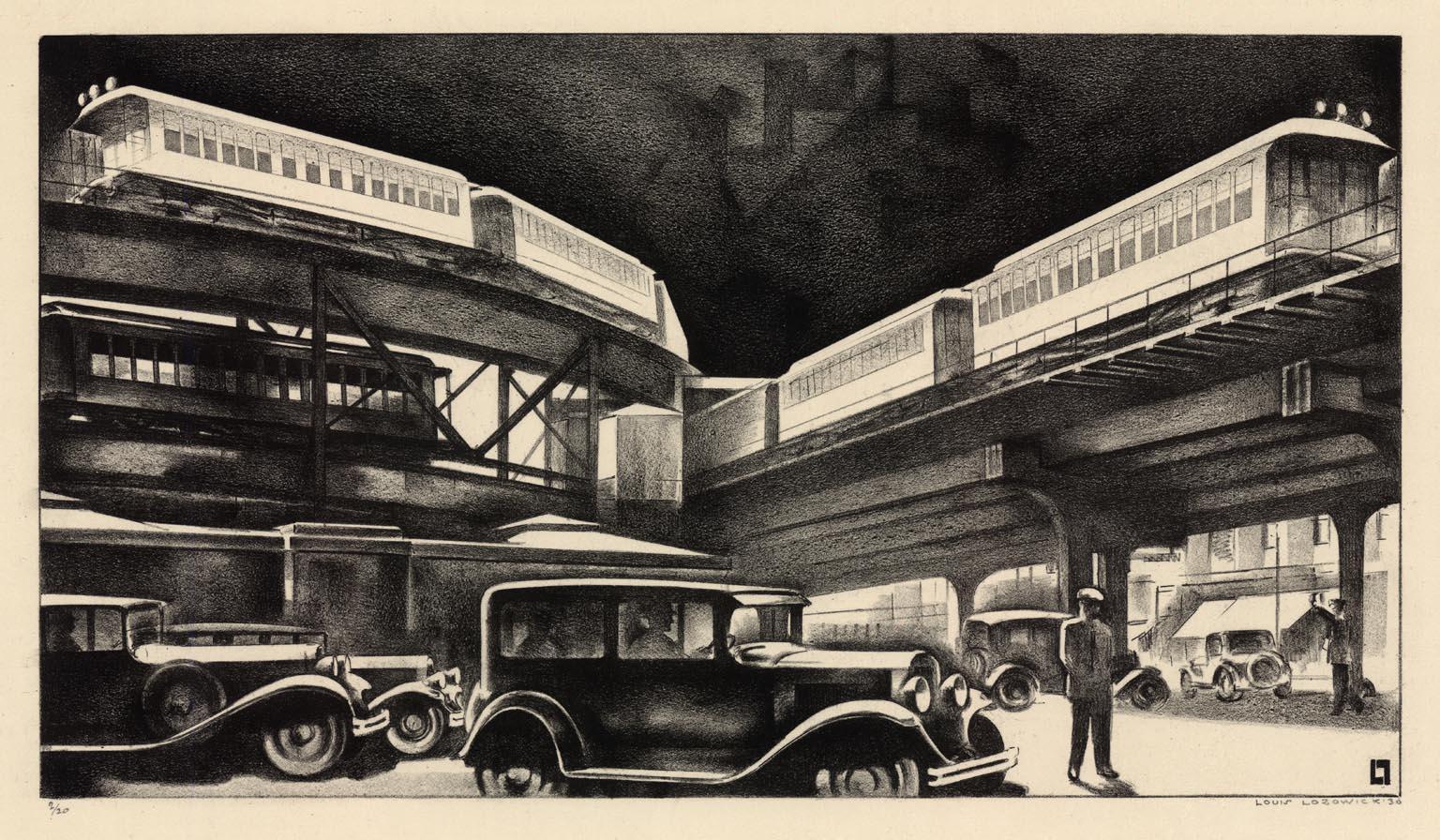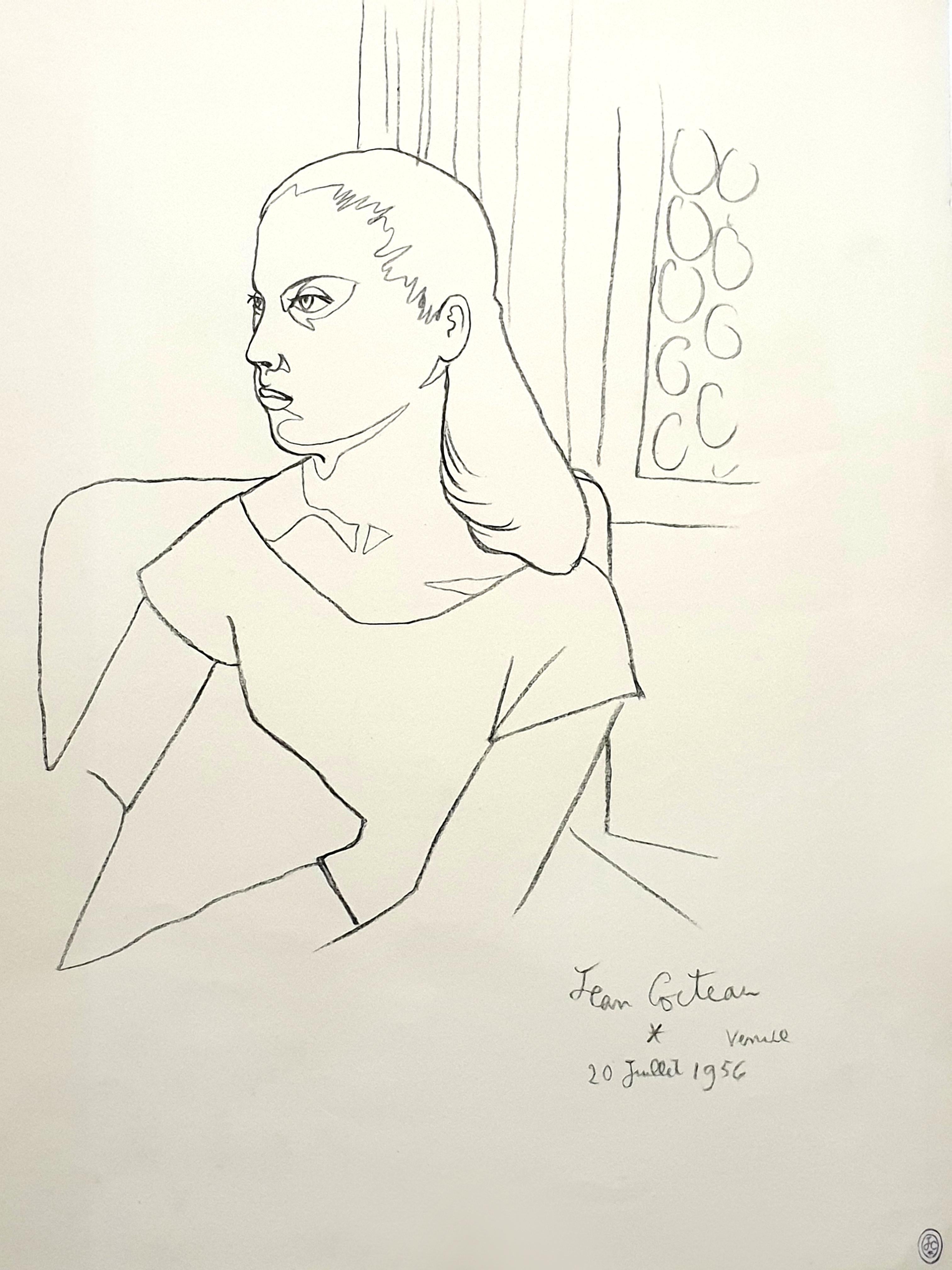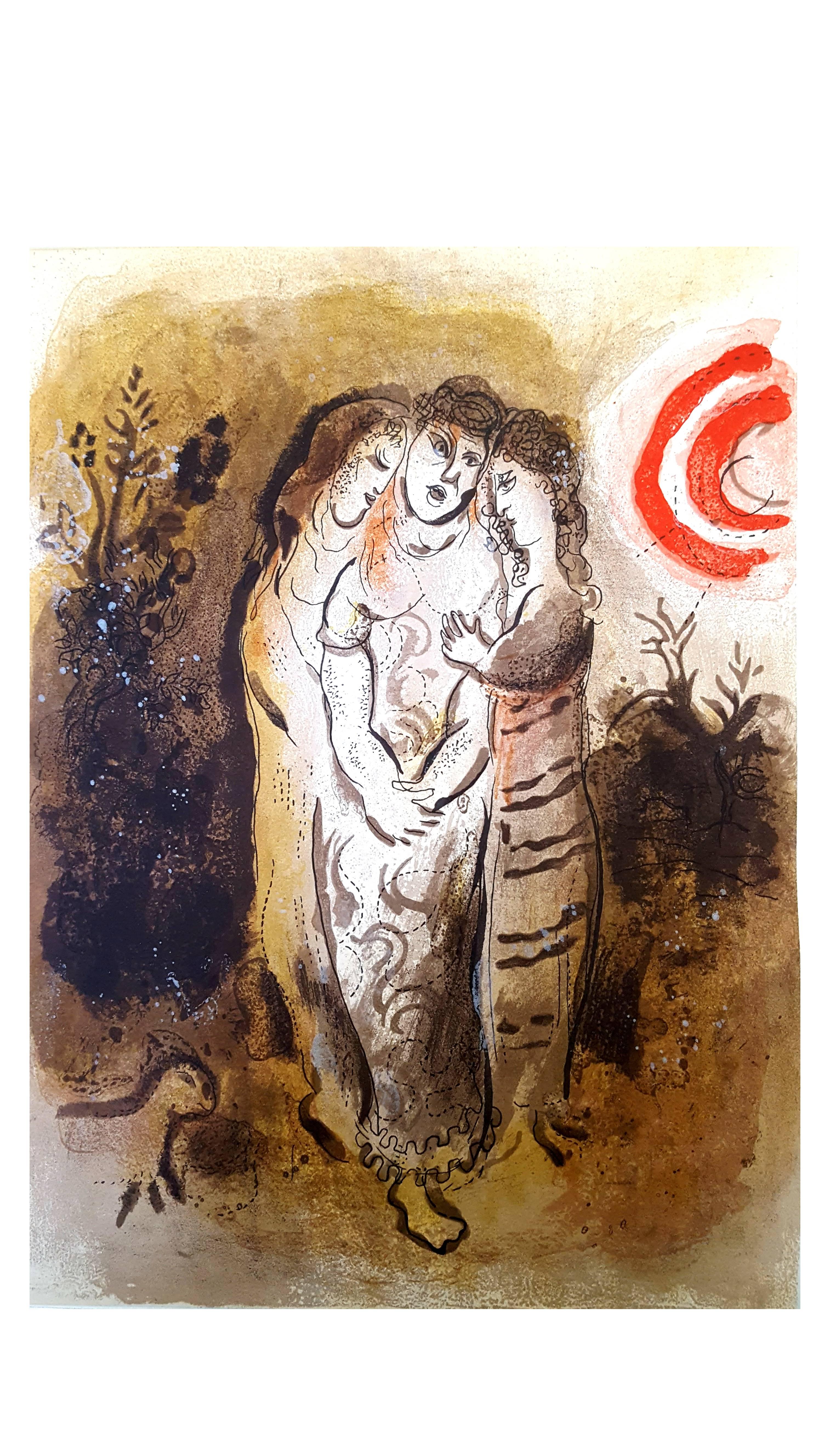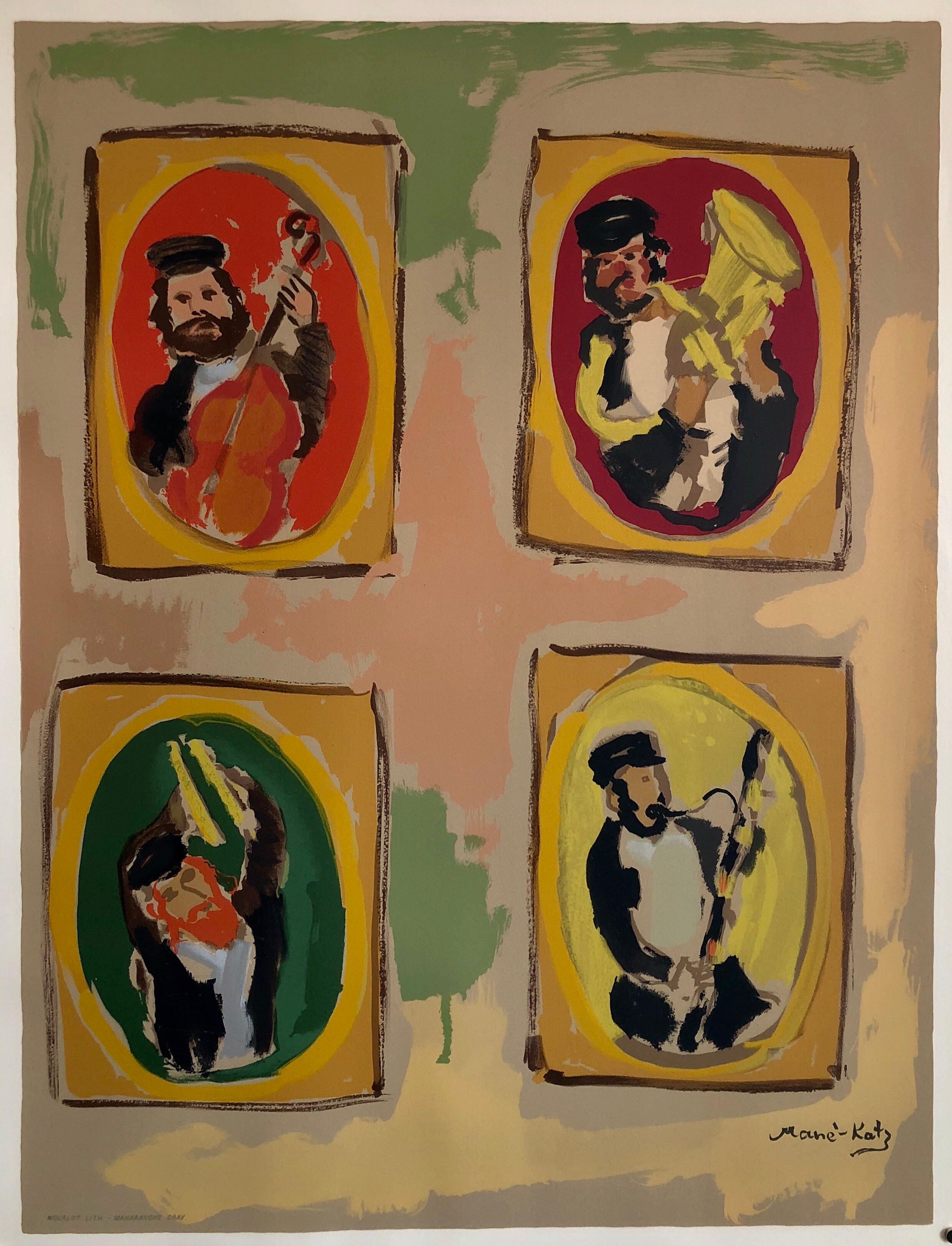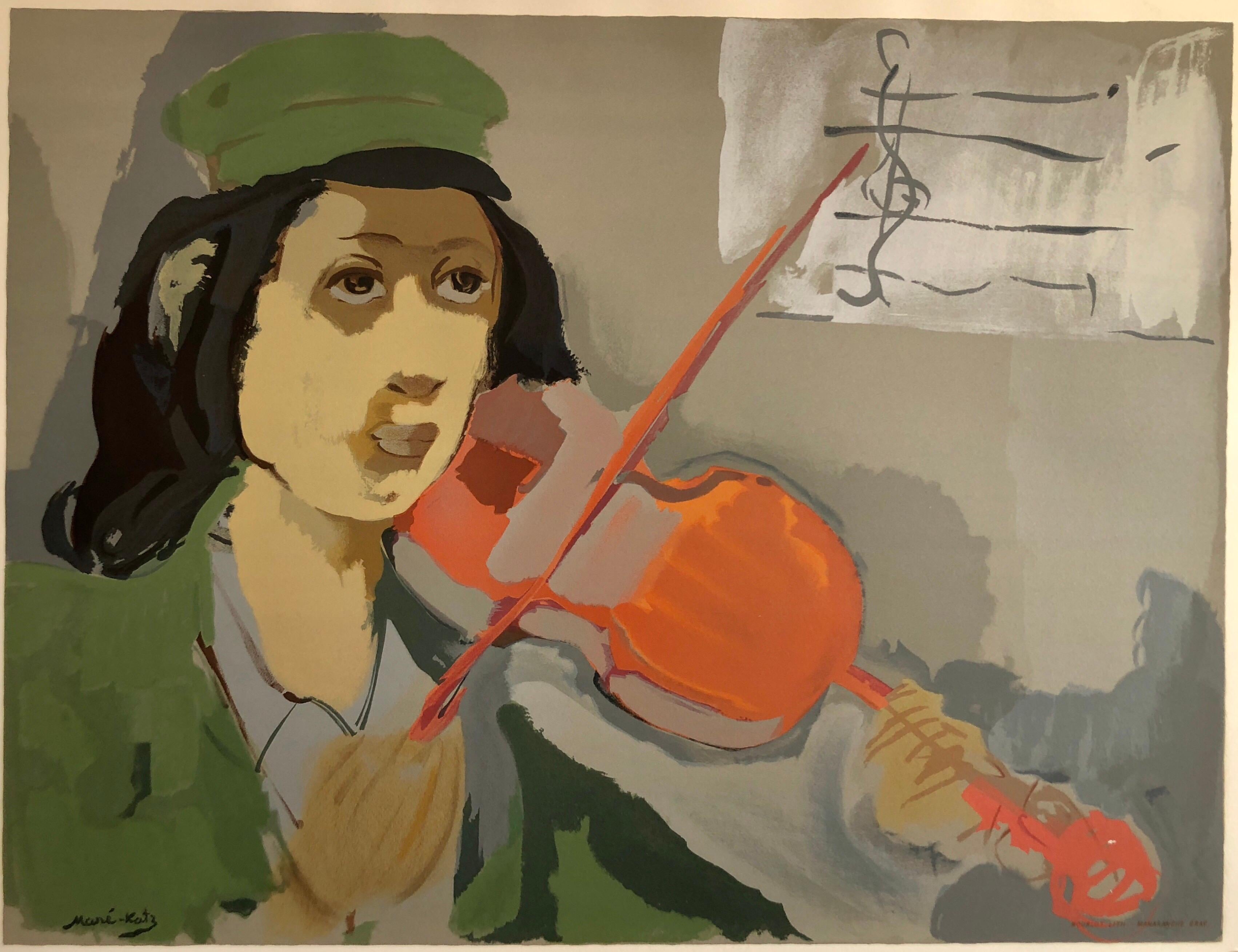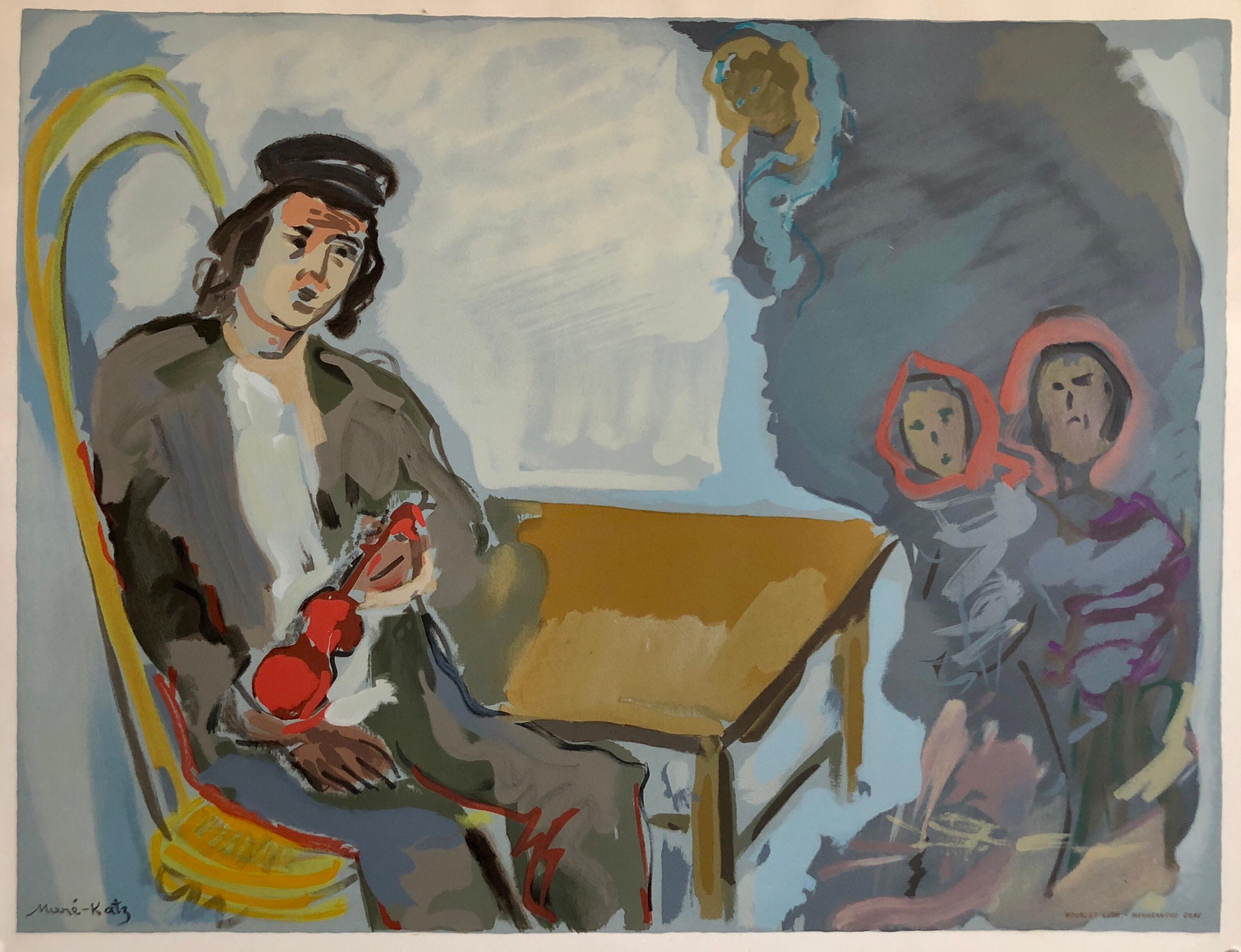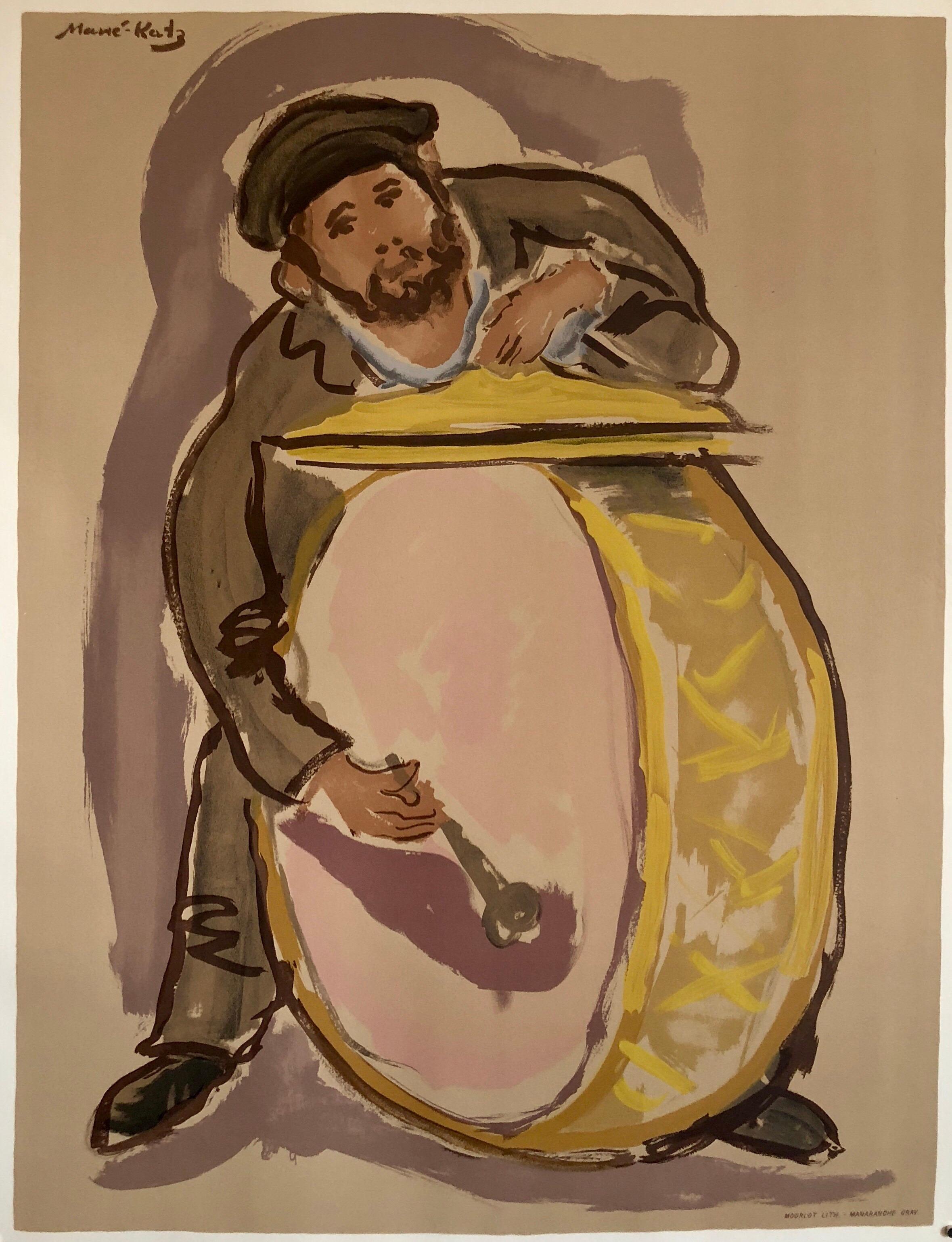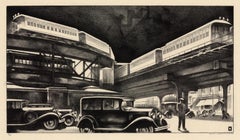Moments Musicaux de Six a Huit
View Similar Items
Valerio AdamiMoments Musicaux de Six a Huit1975
1975
About the Item
- Creator:Valerio Adami (1935, Italian)
- Creation Year:1975
- Dimensions:Height: 29.75 in (75.57 cm)Width: 21 in (53.34 cm)Depth: 0.01 in (0.26 mm)
- Medium:
- Movement & Style:
- Period:
- Condition:
- Gallery Location:San Francisco, CA
- Reference Number:Seller: ada/mom/mus/011stDibs: LU66638420002
Valerio Adami
Valerio Adami is an artist internationally recognized for his seductively rich and psychologically complex paintings. He started from an expressionist painting influenced by the work of Francis Bacon, and then he approached the abstract visual idioms of Pop Art with its cartoonish imagery, flatness and eye-popping colors. His artistic life was deeply marked by the meeting with the painters Roberto Sebastián Antonio Matta and Wilfredo Lam, who inspired and encouraged him to develop his talents. Adami’s works are layered with meanings, and his works are exhibited in the most important museums all over the world, London, New York, Venice, Chicago, Rome, Washington, Paris and Tokyo.
- "Mujer Con Sombrero" Large lithographBy Rufino TamayoLocated in San Francisco, CAThis artwork titled "Mujer Con Sombrero (Woman with Hat)" 1972 is a large original colors lithograph on Arches paper by renown Mexican artist Rufino Tamayo, 1899-1991. It is hand signed and numbered 81/100. in pencil by the artist. The artwork size 36.35 x 25.85 inches, sheet size is 37.25 x 26.25 inches, framed size is 52.25 x 40.5 inches. Published by Transworld Art, New York , Printed by Bank Street Atelier, New York. Referenced and pictured in the artist's catalogue raisonne by Pereda, plate #132 page 123. Custom framed in a wooden black and silver frame, with silver bevel and fabric matting. It is in excellent condition. Will provide the buyer with a certificate of authenticity from our gallery and photocopy of the pages related to this artwork from the artist's catalogue raisone. About the artist: A native of Oaxaca in Southern Mexico, Rufino Tamayo's father was a shoemaker, and his mother a seamstress. Some accounts state that he was descended from Zapotec Indians, but he was actually 'mestizo' - of mixed indigenous/European ancestry. (Santa Barbara Museum of Art). He began painting at age 11. Orphaned at the age of 12, Tamayo moved to Mexico City, where he was raised by his maternal aunt who owned a wholesale fruit business. In 1917, he entered the San Carlos Academy of Fine Arts, but left soon after to pursue independent study. Four years later, Tamayo was appointed the head designer of the department of ethnographic drawings at the National Museum of Archaeology in Mexico City. There he was surrounded by pre-Colombian objects, an aesthetic inspiration that would play a pivotal role in his life. In his own work, Tamayo integrated the forms and tones of pre-Columbian ceramics into his early still lives and portraits of Mexican men and women. In the early 1920s he also taught art classes in Mexico City's public schools. Despite his involvement in Mexican history, he did not subscribe to the idea of art as nationalistic propaganda. Modern Mexican art at that time was dominated by 'The Three Great Ones' : Diego Rivera, Jose Clemente Orozco, and David Alfaro Siqueros, but Tamayo began to be noted as someone 'new' and different' for his blending of the aesthetics of post Revolutionary Mexico with the vanguard artists of Europe and the United States. After the Mexican Revolution, he focused on creating his own identity in his work, expressing what he thought was the traditional Mexico, and refusing to follow the political trends of his contemporary artists. This caused some to see him as a 'traitor' to the political cause, and he felt it difficult to freely express himself in his art. As a result, he decided to leave Mexico in 1926 and move to New York, along with his friend, the composer Carlos Chavez. The first exhibition of Tamayo's work in the United States was held at the Weyhe Gallery, New York, in that same year. The show was successful, and Tamayo was praised for his 'authentic' status as a Mexican of 'indigenous heritage', and for his internationally appealing Modernist aesthetic. (Santa Barbara Museum of Art). Throughout the late thirties and early forties New York's Valentine Gallery gave him shows. For nine years, beginning in 1938, he taught at the Dalton School in New York. In 1929, some health problems led him to return to Mexico for treatment. While there he took a series of teaching jobs. During this period he became romantically involved with the artist Maria Izquierdo...Category
Mid-20th Century Modern Figurative Prints
MaterialsLithograph
- Mascara RojaBy Rufino TamayoLocated in San Francisco, CAThis artwork titled "Mascara Roja" 1969 is an original colors lithograph on B.F.K. Rives paper by renown Mexican artist Rufino Tamayo, 1899-1991. It is hand signed and inscribed H.C. (Hors Commerce) in pencil by the artist. The image size is 21 x 27.25 inches, framed size is 37.25 x 42 inches. Published by Touchtone Publisher, New York, printed by Ateliers Desjobert, Paris. Referenced and pictured in the artist's catalogue raisonne by Pereda, plate #124. Custom framed in a wooden gold leaf frame, with gold and red spacer and fabric matting. It is in excellent condition. About the artist: A native of Oaxaca in Southern Mexico, Rufino Tamayo's father was a shoemaker, and his mother a seamstress. Some accounts state that he was descended from Zapotec Indians, but he was actually 'mestizo' - of mixed indigenous/European ancestry. (Santa Barbara Museum of Art). He began painting at age 11. Orphaned at the age of 12, Tamayo moved to Mexico City, where he was raised by his maternal aunt who owned a wholesale fruit business. In 1917, he entered the San Carlos Academy of Fine Arts, but left soon after to pursue independent study. Four years later, Tamayo was appointed the head designer of the department of ethnographic drawings at the National Museum of Archaeology in Mexico City. There he was surrounded by pre-Colombian objects, an aesthetic inspiration that would play a pivotal role in his life. In his own work, Tamayo integrated the forms and tones of pre-Columbian ceramics into his early still lives and portraits of Mexican men and women. In the early 1920s he also taught art classes in Mexico City's public schools. Despite his involvement in Mexican history, he did not subscribe to the idea of art as nationalistic propaganda. Modern Mexican art at that time was dominated by 'The Three Great Ones' : Diego Rivera, Jose Clemente Orozco, and David Alfaro Siqueros, but Tamayo began to be noted as someone 'new' and different' for his blending of the aesthetics of post Revolutionary Mexico with the vanguard artists of Europe and the United States. After the Mexican Revolution, he focused on creating his own identity in his work, expressing what he thought was the traditional Mexico, and refusing to follow the political trends of his contemporary artists. This caused some to see him as a 'traitor' to the political cause, and he felt it difficult to freely express himself in his art. As a result, he decided to leave Mexico in 1926 and move to New York, along with his friend, the composer Carlos Chavez. The first exhibition of Tamayo's work in the United States was held at the Weyhe Gallery, New York, in that same year. The show was successful, and Tamayo was praised for his 'authentic' status as a Mexican of 'indigenous heritage', and for his internationally appealing Modernist aesthetic. (Santa Barbara Museum of Art). Throughout the late thirties and early forties New York's Valentine Gallery gave him shows. For nine years, beginning in 1938, he taught at the Dalton School in New York. In 1929, some health problems led him to return to Mexico for treatment. While there he took a series of teaching jobs. During this period he became romantically involved with the artist Maria Izquierdo...Category
Mid-20th Century Modern Figurative Prints
MaterialsLithograph
- Liberated VillageBy William GropperLocated in San Francisco, CAThis artwork titled "Liberated Village" c. 1940, is an original lithograph on paper by noted American artist William Gropper, 1897-1977. It is hans signed and titled in pencil by the artist. The artwork (image) size is 12 x 16.5 inches, framed size is 20.25 x 24.25 inches. Custom framed in a black metal frame, with off white matting. It is in excellent condition. An example of this particular artwork is held at the Metropolitan Museum of Art, New York. About the artist: William Gropper was born in New York City's Lower East Side in 1897. He was the first of six children to parents who earned small wages working in sweatshops. At the age of fourteen, Gropper left school to help support his family. While carrying bolts of cloth for his deliveries, Gropper began to draw on scraps of paper, sidewalks, and walls. A passerby saw some of these drawings and invited Gropper to attend a life-drawing class at the Ferrer School. He studied there for three years from 1912 to 1915, attending classes taught by Robert Henri and George Bellows. From 1915 to 1918 Gropper attended the New York School of Fine and Applied Art part-time on scholarship. Gropper also won a scholarship to the National Academy of Design, but remained as a student for only a short time; the rigid and systematic institution conflicted with Gropper's belief in the personal nature of art. At the New York School of Fine and Applied Art, Gropper earned several prizes. One of these prizes was for his cartoons, which led him to be hired by the New York Tribune in 1917 to sketch for their features. A few years later through freelance work, his cartoons and drawings appeared in other newspapers and magazines, such as The Liberator, The New Masses...Category
Mid-20th Century American Realist Figurative Prints
MaterialsLithograph
- Zia, State IIBy Rudolph Carl GormanLocated in San Francisco, CAThis artwork titled "Zia" State II, 1979 Is an original colors lithograph on Buff Arches paper by renown Navajo artist Rudolph Carl Gorman, 1932-2005. It is signed, dated and number...Category
Late 20th Century Realist Figurative Prints
MaterialsLithograph
- "Olympic Robe" Large colors lithographBy Jim DineLocated in San Francisco, CAThis artwork titled "Olympic Robe" From "Game of the XXIVth Olympic, Seoul" is an original colors lithograph on Wove paper by renown artist Jim Dine, b.1935. It is hand signed and nu...Category
Late 20th Century Pop Art Figurative Prints
MaterialsLithograph
- Waiting WomenBy Rudolph Carl GormanLocated in San Francisco, CAThis artwork, titled "Waiting Women", 1976 is an original color lithograph by renown Navajo artist Rudolph Carl Gorman, 1932-2005. It is hand-signed, dated and numbered 63/120 in pencil by the artist, also dedicated "To Purificacion Ramirez" With the blindstamp of the artist and another blindstamp. The sheet size is 22 x 30 inches, framed size is 22.5 x 30.5 inches. Custom framed in a clear acrylic box. It is in excellent condition. The acrylic box is in good condition with a few very faint scratches. Artist: R.C. Gorman (1932-2005) Title: Waiting Women Medium: Lithograph on Paper Sheet Size: 22" x 30" Framed size: 22.5" x 30.5" Year Produced: 1976 Edition Size: 120 plus proofs (25 proofs) This one: 63/120 About the artist: Born in Canyon de Chelly, Arizona and raised in a hogan on the Navajo Reservation, R.C. Gorman became one of the Southwest's best known late 20th-century artists. His signature works were Navajo women in a variety of poses. Many persons have been fascinated by the fact that he, an Indian artist, became famous in the white man's world with some calling him the "Picasso of Indian artists". Of this kind of attention, he said: "I wish people would quit pushing my being Indian. The only time I was interviewed as If I were a normal person was by the Jewish Press in Tucson. It was the first time I felt international and almost white". (Samuels 222) His parents were Carl Nelson...Category
Late 20th Century Realist Figurative Prints
MaterialsLithograph
- TrafficBy Louis LozowickLocated in New York, NYLouis Lozowick created the lithograph entitled Traffic in 1930. This stunning impression is signed and dated in pencil in the lower right just under the image and inscribed "2/20" i...Category
Mid-20th Century Modern More Prints
MaterialsLithograph
$40,000 - Jean Cocteau - Torrero - Original LithographBy Jean CocteauLocated in Collonge Bellerive, Geneve, CHOriginal Lithograph by Jean Cocteau Title: Taureaux Signed in the plate Dimensions: 40 x 30 cm Edition: 200 Luxury print edition from the portfolio of Trinckvel 1965 From the last po...Category
1960s Modern More Prints
MaterialsLithograph
- Descente aux enfersBy Georges BraqueLocated in Paris, FRLithograph on Japan Paper, 1961 handsigned by the artist in pencil 23 x 19 cm (image) - 32 x 25 cm (sheet) very good condition LCD2804Category
1960s Modern Figurative Prints
MaterialsLithograph
- Jean Cocteau - Angel - Original Handcolored LithographBy Jean CocteauLocated in Collonge Bellerive, Geneve, CHJean Cocteau - Angel - Original Handcolored Lithograph Signed in the plate Stampsigned Handcolored in pencil. Edition : /XXV Dimensions: 47.5 x...Category
1950s Modern More Prints
MaterialsLithograph
- Jean Cocteau - Young Girl - Original LithographBy Jean CocteauLocated in Collonge Bellerive, Geneve, CHJean Cocteau - Young Girl - Original Lithograph Signed and dated in the plate Stampsigned Dimensions: 53 x 42 cm 1956 Provenance : Succession Dermit, Cocteau's heirCategory
1950s Modern More Prints
MaterialsLithograph
- Marc Chagall - The Bible - Naomi and her daughters-in-law - Original LithographBy Marc ChagallLocated in Collonge Bellerive, Geneve, CHMarc Chagall, Original Lithograh depicting an instant of the Bible. Technique: Original lithograph in colours (Mourlot no. 234) On the reverse: another black and white original litho...Category
1960s Modern Figurative Prints
MaterialsLithograph
